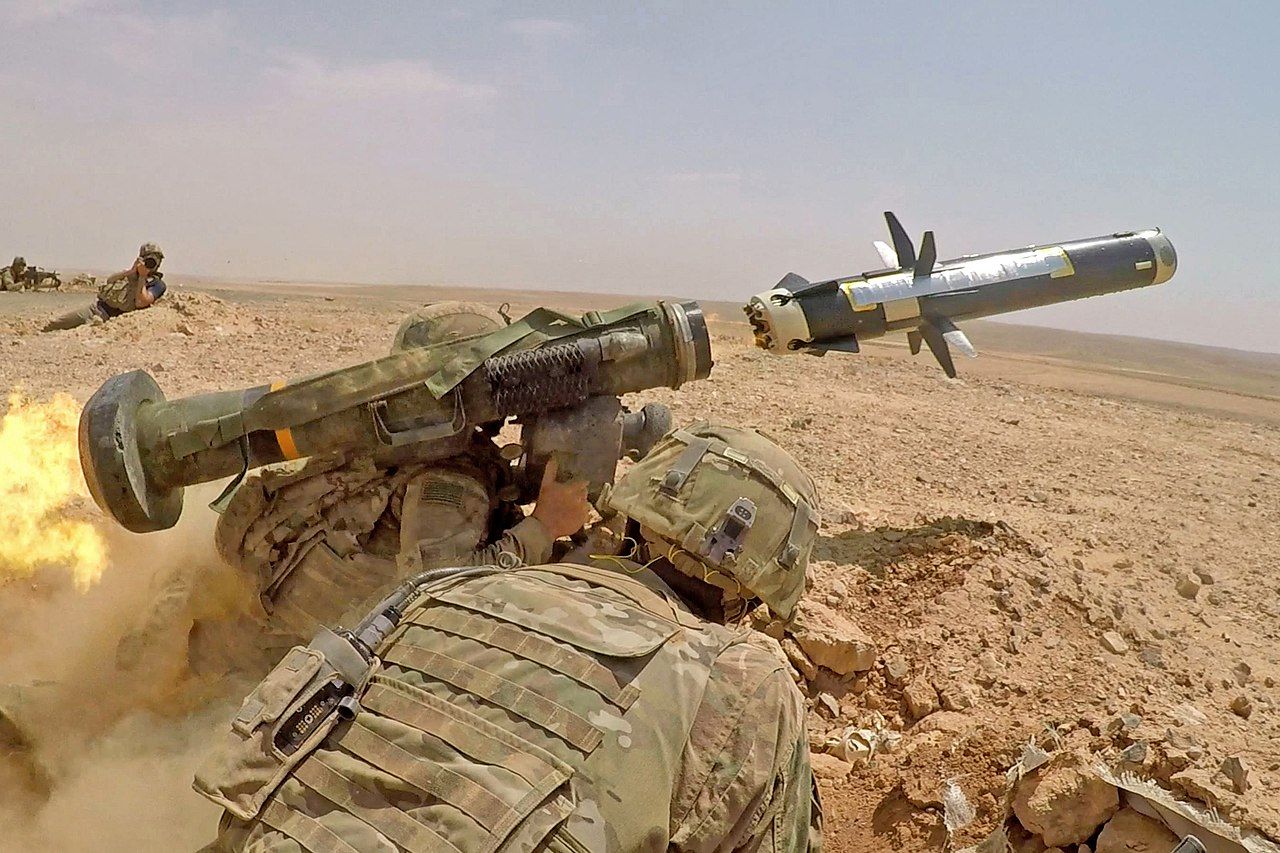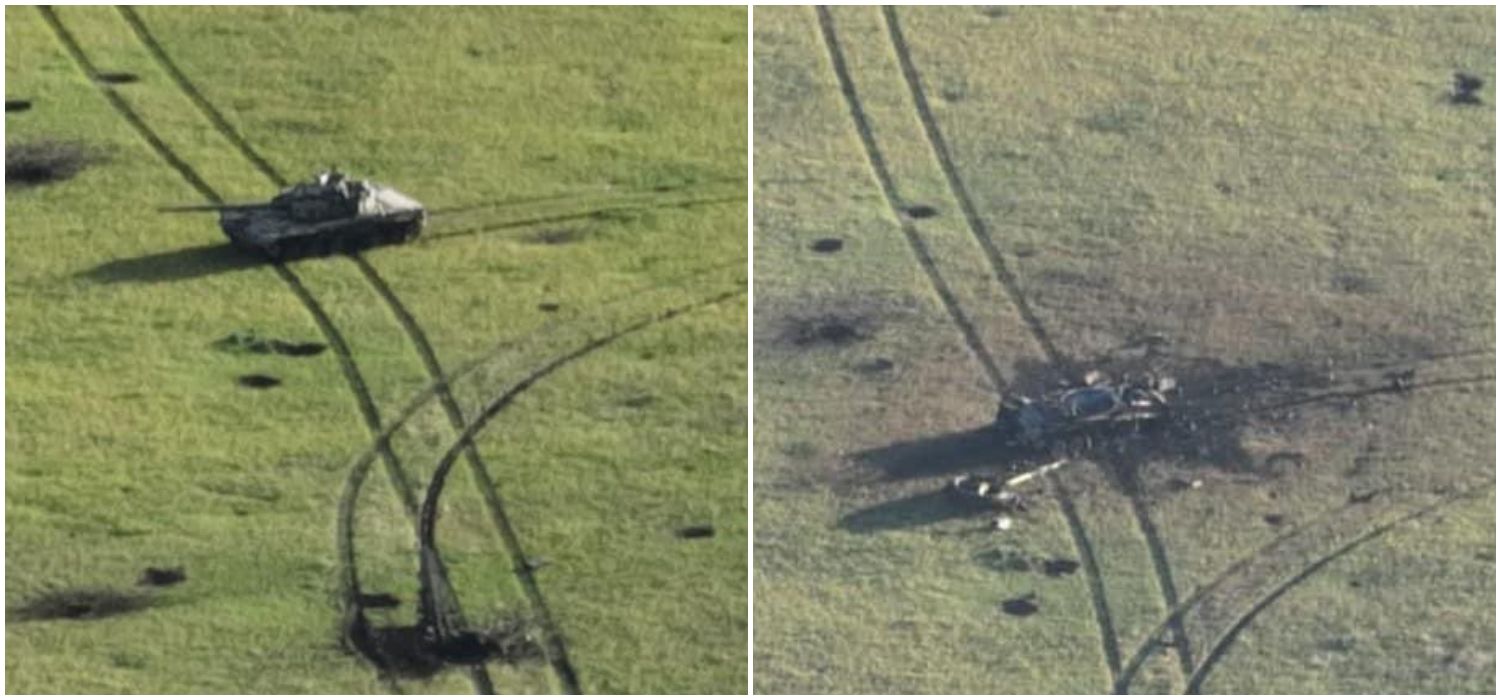Ukraine sounded the bugle for a full-blown offensive in the Kherson region, which Russia annexed after an arbitrary referendum. As the fighting began to escalate in this south Ukrainian territory held by Moscow, media reports suggest that a new set of Anti-Tank Guided Missiles are wreaking havoc on Russian tanks.
Ukraine Strikes Another Russian Bridge After Kerch & This Time With HIMARS MLRS In Kherson Region
The development comes after a local leader appointed by Russia announced earlier this week that tens of thousands of citizens and Russian-appointed officials were being evacuated from the region ahead of a Ukrainian offensive.
The offensive follows a week of brutal Russian air raids on Ukrainian urban centers that have targeted its energy infrastructure and led to power outages.
The most significant thing about the Ukrainian offensive in Kherson is the use of a new set of Anti Tank Guided Missiles, better and bigger than the ones already in service with the Armed Forces of Ukraine (AFU).
Russian language media reported on October 21 that the AFU has begun to use TOW anti-tank missile systems, ones with the longest range in service with the Ukrainian military.
The video of what seemed to be the first-ever operational use of the TOW Anti-tank missile went viral on the micro-blogging site Twitter. An account that goes by the name ‘Ukraine Weapons Tracker’ and regularly posts the development of the war tweeted the video that immediately went viral.
#Ukraine: Video purporting to show the 1st Ukrainian TOW ATGM strike against a Russian vehicle has surfaced, with a M41A7 TOW HMMWV-mounted Improved Target Acquisition System used, complete with thermal optics.
However, we cannot verify if this is combat use or training abroad. pic.twitter.com/xWQX2QJTfp
— ?? Ukraine Weapons Tracker (@UAWeapons) October 20, 2022
EurAsian Times had reported earlier in October that in the new $775 million security aid package, the Joe Biden administration was supplying 1500 units of Tube-launched, optically tracked, wire-guided (TOW) anti-tank missiles.
According to recent reports, these systems have now been installed on lightly armored or pickup vehicles by the Ukrainian military.
Ukraine has long been equipped with state-of-the-art anti-tank systems that have dealt a heavy blow to Russian tanks since the initial months of the invasion, including the Javelins provided by the United States and the New Generation Light Anti-Tank Weapon (NLAW) supplied by the United Kingdom.

These missiles are believed to be game-changing equipment delivered to Ukraine during the war. They can take out electronic and kinetic defenses, target the tank’s vulnerable top, and don’t need ongoing guidance or tracking from an exposed operator.
Not just these, Ukraine’s own Stugna-P ATGMs have also proved to be an effective asset in the fight against Russian armor.
If Ukraine’s latest estimates are anything to go by, about 2573 Russian tanks have been eliminated. However, according to internal Raytheon documents published on Russian social media earlier, the Javelin Anti-Tank Guided Missiles (ATGM), the most used ATGM in the Ukrainian battleground, have a low hit-to-miss ratio, range, and technical flaws.
Despite any technical flaws that may have plagued these anti-tank weapons, Ukraine has been able to decimate Russian armor. On top of that, Ukraine is now using even more lethal and maneuverable TOW Anti-tank missiles.

Longer-Range, More Maneuverable!
Light armored vehicles or pickups are equipped with anti-tank systems. According to reports, the Ukrainian military moves toward the launch point, engages the target by firing, and then swiftly retreats.
The Ukrainian troops can escape quickly before their position is attacked since the American TOW anti-tank systems can fire at a distance of up to 4.5 kilometers.
The Ukrainian military uses TOW ATGMs in the Kherson region, benefiting from the comparatively flatter terrain. Some social media users speculated that the TOW Anti-tank missiles were being installed on Humvees, also acquired from the United States.
Military and OSINT Analyst Ryan McBeth said on Twitter: “Please steal this video, translate it into Russian and make sure it gets onto Russian Telegram. The TOW missile is no joke. The ITAS sight can see through smoke and fog. These Russian boys are going to burn to death for nothing. Please save their lives.”
Please steal this video, translate it into Russian and make sure it gets onto Russian Telegram. The TOW missile is no joke. The ITAS sight can see through smoke and fog. These Russian boys are going to burn to death for nothing. Please save their lives:https://t.co/nHcGjZn9sZ
— Ryan McBeth???? (@RyanMcbeth) October 21, 2022
Raytheon Systems manufactures the powerful anti-tank missile armament system BGM-71, which is tube-launched, optically tracked, and wire-guided (TOW).
Over 15,000 ground, vehicle, and helicopter platforms worldwide have integrated TOW, which more than 40 armed forces use. The US Army, Marines, and other clients employed the system equipped with wireless guidance in 2010.
The TOW missile system can be installed on military vehicles as a single-tube pedestal mount or as two-tube or four-tube under-armor systems on vehicles such as the upgraded TOW vehicle M901, Desert Warrior, Piranha, US Marine Corps LAV, Dardo Hitfist, and Bradley M2/M3.

The missile has line-of-sight guidance under command. The missile is fired after the weapons operator views a spot on the target with a telescopic sight. The missile uses a two-stage solid propellant rocket motor from ATK (Alliant Techsystems).
The operator keeps following the target through sight. The control system on the missile is connected to the guidance computer via two wires that spool out from the back of the missile.
A high-intensity thermal beacon is a source for long-wave infrared tracking on the missile, while a xenon beacon provides short-wave tracking. This dual-tracking technology offers increased resilience to infrared and electro-optical countermeasures.
When asked how this new anti-tank missile compares with the existing systems, Lt Col JS Sodhi (retd) told EurAsian Times: “The TOW anti-tank missiles have more lethality than Javelins, Stugna or the NLAW anti-tank missiles as the TOW missiles can penetrate up to 900 mm of RHA whereas the Javelin, Stugna, and the NLAW anti-tank missiles can penetrate only up to 760 mm, 800 mm and 500 mm RHA (Rolled Homogenous Armor) respectively.
“The TOW is lightweight too as it has a warhead of only 6.14 kilograms and coupled with a length of 1.1 meters, the TOW causes maximum destruction compared with the other three anti-tank missiles.”
Armed with TOWs and other lethal equipment, including the HIMARS, the Ukrainian military seems better prepared to take on the Russian troops.
- Contact the author at sakshi.tiwari9555@gmail.com
- Follow EurAsian Times on Google News




